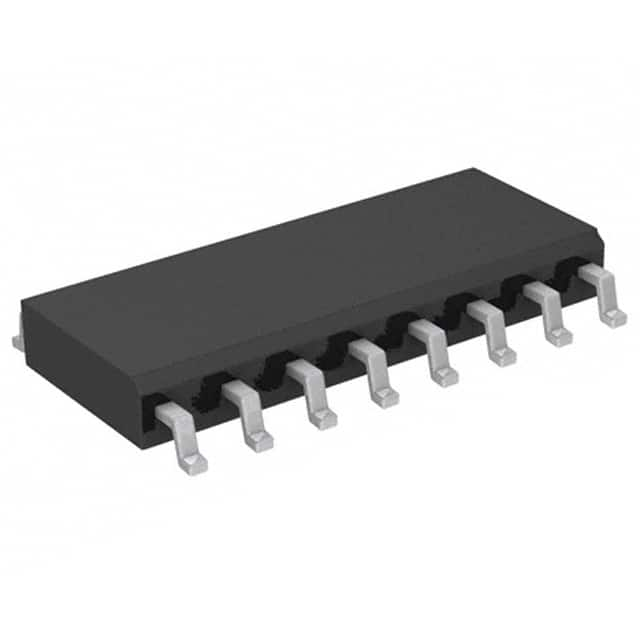MC100EL34DR2G
Overview
Category: Integrated Circuit (IC)
Use: Signal Processing
Characteristics: - High-speed ECL (Emitter-Coupled Logic) Differential Receiver - Low Voltage Differential Signaling (LVDS) Compatible - Wide Operating Range: -4.2V to -5.7V - High Bandwidth: 3.8GHz - Low Propagation Delay: 250ps
Package: SOIC-8
Essence: The MC100EL34DR2G is a high-speed ECL differential receiver IC designed for signal processing applications. It is compatible with LVDS signaling and offers a wide operating range, high bandwidth, and low propagation delay.
Packaging/Quantity: The MC100EL34DR2G is available in a Small Outline Integrated Circuit (SOIC) package with 8 pins. It is typically sold in reels or tubes containing multiple units.
Specifications and Parameters
- Supply Voltage Range: -4.2V to -5.7V
- Input Voltage Range: -2.0V to -5.7V
- Output Voltage Range: -2.0V to -5.7V
- Operating Temperature Range: -40°C to +85°C
- Maximum Input Clock Frequency: 3.8GHz
- Propagation Delay: 250ps
Pin Configuration
The MC100EL34DR2G has the following pin configuration:
1. VCC
2. Qn
3. Qp
4. GND
5. Dn
6. Dp
7. VBB
8. VEE
Functional Characteristics
The MC100EL34DR2G functions as a high-speed ECL differential receiver. It receives differential input signals (Dn and Dp) and provides differential output signals (Qn and Qp). The VCC pin is the positive supply voltage, while the VEE pin is the negative supply voltage. The VBB pin is used for biasing.
Advantages and Disadvantages
Advantages: - High-speed operation - LVDS compatibility - Wide operating range - Low propagation delay
Disadvantages: - Requires external biasing - Limited availability in alternative packages
Applicable Range of Products
The MC100EL34DR2G is suitable for various signal processing applications that require high-speed and low-delay differential receivers. It can be used in communication systems, data transmission equipment, test and measurement instruments, and other similar devices.
Working Principles
The MC100EL34DR2G operates based on ECL logic principles. It receives differential input signals and converts them into compatible output signals. The internal circuitry ensures high-speed operation and low propagation delay.
Detailed Application Field Plans
Communication Systems: The MC100EL34DR2G can be used in high-speed data communication systems to receive and process differential signals.
Data Transmission Equipment: It is suitable for use in data transmission equipment such as routers, switches, and network interfaces.
Test and Measurement Instruments: The IC can be incorporated into test and measurement instruments that require high-speed signal processing capabilities.
Industrial Automation: It finds application in industrial automation systems where fast and accurate signal reception is crucial.
Medical Imaging: The MC100EL34DR2G can be utilized in medical imaging devices that require high-speed data acquisition and processing.
Detailed Alternative Models
While the MC100EL34DR2G is a popular choice for high-speed ECL differential receivers, there are alternative models available from different manufacturers. Some notable alternatives include:
- MC10ELT21DR2G
- MC100EP16VADG
- MC100EP16VTDR2G
- MC100ELT25DG
- MC100ELT28DR2G
5 Common Technical Questions and Answers
Q: What is the maximum operating frequency of the MC100EL34DR2G? A: The IC can operate at frequencies up to 3.8GHz.
Q: Can the MC100EL34DR2G be used with LVDS signals? A: Yes, it is compatible with LVDS signaling.
Q: What is the power supply voltage range for this IC? A: The supply voltage range is -4.2V to -5.7V.
Q: Does the MC100EL34DR2G require external biasing? A: Yes, it requires external biasing using the VBB pin.
Q: Is the MC100EL34DR2G available in alternative packages? A: While the SOIC-8 package is common, alternative packages may have limited availability.
This encyclopedia entry provides


